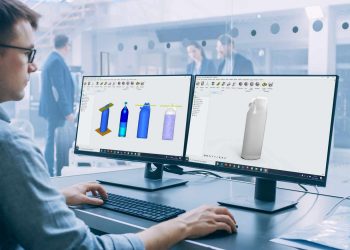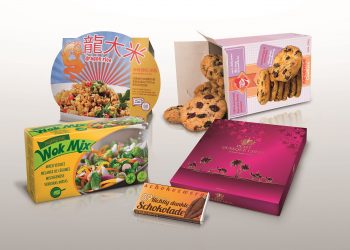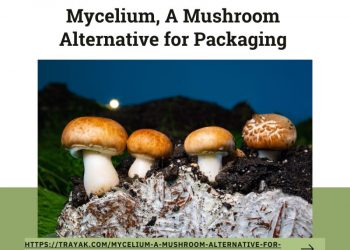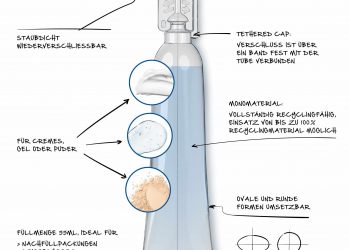“5% of the plastics are recycled effectively, 40% ends up in land fill and 1/3rd of if in the oceans of the world.”
The current scenario of packaging design is based on linear economy i.e., take-make-dispose. In simple words, take the available material, make the product out of it and dispose the product as waste at the end of its cycle. A very common example of this is cosmetics packaging. We take plastic laminates as raw material, make tubes out of it, fill the products, use it and then simply dispose it off; then we buy another. Each time we do this, we are consuming up a finite source of resources and often producing toxic waste. It simply can’t work long term.
However, for a better natural and socio-economic impact and learning from the negative effects of current methods and processes which are based solely upon profit making for industries without considering the society as a whole, we are looking ahead to a transition from linear economy to a circular economy that has a closed loop, where materials, nutrients and data are continuously repurposed. The loops can be in the form of the following ways:
• Reusing
• Refurbishing
• Remanufacturing
• Recycling
This systematic shift builds long tern resilience, generates business and economic opportunities and provides environmental and societal benefits.
Design is an important aspect when we talk about a shift to circular economy. Circular economy is a feedback rich system. If there’s no feedback, it’s not circular. The circular model builds economic, natural, and social capital. It is based on three principles:
• Design out waste and pollution
• Keep products and materials in use
• Regenerate natural systems
There are two ways to design for circularity
• Biological cycle i.e., utilizing natural resources
In biological cycle, food and biologically-based materials (such as cotton or wood) are designed to feed back into the system through processes like composting and anaerobic digestion. These cycles regenerate living systems, such as soil, which provide renewable resources for the economy.
• Technological cycle i.e., utilizing man made materials
Technical cycles recover and restore products, components, and materials through strategies like reuse, repair, remanufacture or (in the last resort) recycling.
The inner loops are more in your control and the other loops are less in your control.
Circularity is all about keeping things in a loop and circulating them a number of times, getting more from less, and not wasting things and all of these become more important for a packaging designer as well as packaging engineer.
It all starts from choosing the right material for the right product to be enclosed within it. Packaging that is made from one material is easy to remanufacture or recycle. A good example of that is an aluminium can. A lousy example is a plastic laminate. Plastic laminates made up of different layers of different plastics which are difficult to separate and hence can only be used for energy recovery or road construction in combination with asphalt. Even then they give rise to a problem called micro-plastics. Recent trends in plastic films include using mono-layer films or plastic materials belonging to the same family of plastics. It is also important to think about the end of life of something when we are designing it. One time or short-term usable products do not need heavy packaging. On the other hand, there are packaging units that need to be designed keeping in mind that they are going to be used multiple times before being sent for recycling. One such example is Returnable Transport Items (RTIs) generally used in automotive industry.
Case Study:
We are going to talk about an Indian company called Cupable who have recently launched a successful circular economy program with many success stories of supporting a variety of events and functions all across India with their reusable cups. Cupable have been a part of many recent events in and out of Mumbai, India and have been continuing their journey to create a circular economy for drinkware.
Cupable aims to solve the ocean plastic problem at the source. They focus on creating a brighter future for our planet through reducing single-use plastics by introducing a deposit system to their products.
Cupable is India’s first brand that designs, manufactures and recycles drinkware that is good for our planet. They believe that they can end single use packaging in our lifetime, together. Cupable build technology enabled systems that produce reusable products that are trackable and can be linked back to their Reusable Centres to be washed and reused. Their aim is to create a sustainable and circular economy for the future.
References: The Circular Design Guide, Ellen MacArthur Foundation.
Courtesy: Cupable
Abhijeet Kumar Sahu is a Mechanical Engineering graduate from KIIT University and a Packaging Professional pursuing PGDP in final year from Indian Institute of Packaging, Mumbai. With over 5 years of experience in the field of engineering and packaging design and one of the few Certified SolidWorks Experts in India, he has served as independent design and engineering consultant for various firms within and out of India, including Godrej & Boyce Mfg. Co. He specializes in engineered plastic products as a design professional.






